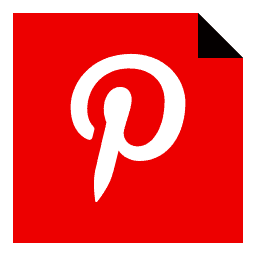If your business doesn’t have a social media presence, you’re going to find yourself struggling against your competition. The fact is that social media is a crucial tool for increasing engagement and converting customers. If you want to stay ahead of the curve, you’re going to need to use your social media platforms effectively. Each platform has its own unique strengths and advantages, so it pays to be on all of them if you have the personnel. We’re going to break down how each major social media platform can help your business.

Despite what you might hear to the contrary, Facebook still enjoys around 2.5 billion active users each month. Some say that Facebook is dwindling in popularity, but nothing could be further from the truth. Around 88% of those aged between 18 and 29 are on Facebook, while roughly 62% of those aged over 65 use the platform. Facebook is the outreach king; you’ll have a massive reach if you advertise your business or engage with your content on Facebook. Crafting content for this platform is easy; you should focus on general-interest content that’s not too specified.

You have a lot less space to work with on Twitter than you do on Facebook. It can be an incredibly useful tool for your business, but you’ll have to be succinct. Back in 2017, Twitter may have expanded its character limit to twice what it used to be, but a 280-character limit still isn’t a tremendous amount of text. You can link to content, of course, but the watchword with Twitter is brevity. Make sure your content is brief, snappy, and engaging without being overly wordy. Nobody really values those “1/13” tweets, so keep it simple!

Obviously, Instagram is all about the images. If your business isn’t particularly visually-focused, then you won’t need to worry about this platform as much, but most businesses can get something out of Instagram. Think hard about the visual aspects of your business. Are you running any cool promotions that you could show off? Do you know of any way you could visually demonstrate what your business is all about quickly and efficiently? That’s what brings in the big follower counts on Instagram, so before you get started on this platform, make sure you’re savvy.
YouTube

Many don’t think of YouTube as a social media platform, but of course, that’s exactly what it is. Users upload content to the service and others can comment on it; ergo, it’s a social media platform. Again, most businesses should be able to find a way to use YouTube to boost engagement with their content. If you absolutely can’t generate your own videos, try reaching out to YouTube influencers that are operating within the same sphere as you. Be sure not to come across as too corporate – influencers respond well to businesses that are down-to-earth and communicative.
TikTok

TikTok may be a relatively new player on the social media scene, but it’s rapidly gaining ground. When Vine died a death back in 2016, the world clamoured for a successor, and TikTok gave it to them. Videos on TikTok must be under a minute in length, so you can think of this platform as effectively Twitter for video content. Again, reaching out to TikTok influencers and content creators is a great way to grow your brand on this platform, but it isn’t the only way you can grow; you can also create your own content. Be sure to keep an eye on trending hashtags and try to understand the TikTok algorithm.

Often forgotten by marketers and social media executives, Pinterest can nonetheless bring your company some good follower fortune if it’s right for you. Not all businesses can take advantage of Pinterest’s rather unique blend of social media platform and image-based bulletin board. If your business is heavily visually-based, though, or if you’re a media or creative agency, then Pinterest could be your new best friend. You’d be surprised how creating good boards and clueing others in on their existence can bring you new followers and customers!
Snapchat

If your business is mainly targeted at a younger demographic – that is to say, those under the age of around 35 – then Snapchat is the app for you. The short, bite-sized clips on Snapchat disappear quickly, making them perfect for transitory or fleeting observations. The downside is that younger people are often quite sceptical about businesses and companies engaging with them on social media platforms. You’ll need to be very clever about the way in which you create content on Snapchat. That means doing your research thoroughly and speaking to those who use the platform regularly.
Visit our site.

